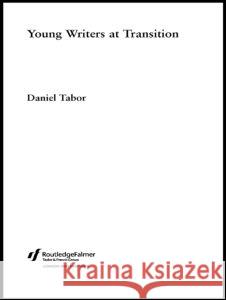Young Writers at Transition » książka
Young Writers at Transition
ISBN-13: 9780415251778 / Angielski / Twarda / 2004 / 216 str.
Young Writers at Transition
ISBN-13: 9780415251778 / Angielski / Twarda / 2004 / 216 str.
(netto: 670,84 VAT: 5%)
Najniższa cena z 30 dni: 700,05
ok. 22 dni roboczych
Dostawa w 2026 r.
Darmowa dostawa!
How does children's writing develop in the transition from primary to secondary school? Young Writers at Transition tracks a group of pupils from the end of Year 6 into the first half of Year 7. It analyses in detail the teaching and uses of writing at this important stage in their education, and uncovers some revealing findings concerning the experiences, perceptions and expectations of pupils, teachers and parents about writing.
The authors link their findings to the broader issues of policy and our understanding about how writing is taught and used in transition. This timely book examines issues such as: * transition, continuity and progression, and how these can be managed to ensure standards do not suffer
* the variety of teaching and uses of writing in Years 6 and 7
* secondary school teachers' views of writing, and what practice is most effective for them
* different ways of thinking about transition, continuity and progression
* how the National Literacy Strategy has affected continuity and progression in children's writing at transition. This interesting study of the uses of writing will be a valuable resource, with practical suggestions, to teachers and educators in primary and secondary schools.
How does children's writing develop in the transition from primary to secondary school?
Young Writers at Transition tracks a group of pupils from the end of Year 6 into the first half of Year 7. It analyses in detail the teaching and uses of writing at this important stage in their education, and uncovers some revealing findings concerning the experiences, perceptions and expectations of pupils, teachers and parents about writing.
The authors link their findings to the broader issues of policy and our understanding about how writing is taught and used in transition. This timely book examines issues such as:
* transition, continuity and progression, and how these can be managed to ensure standards do not suffer
* the variety of teaching and uses of writing in Years 6 and 7
* secondary school teachers' views of writing, and what practice is most effective for them
* different ways of thinking about transition, continuity and progression
* how the National Literacy Strategy has affected continuity and progression in children's writing at transition.
This interesting study of the uses of writing will be a valuable resource, with practical suggestions, to teachers and educators in primary and secondary schools.











